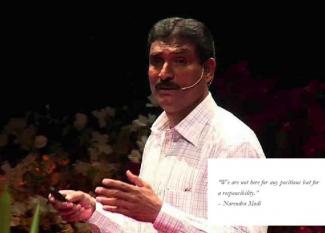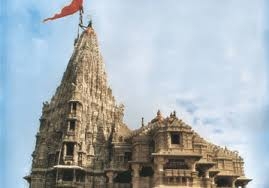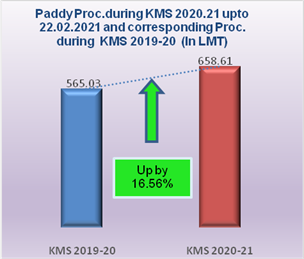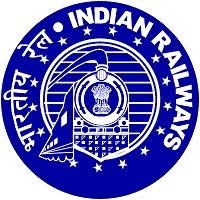

A detailed study has been undertaken by Indian Social Responsibility Network (ISRN) to document and compile Antyodaya based best practices as propounded by Pandit Deendayal Upadhyaya. This is an attempt to bring forth the efforts of all those who are working to uplift the last man in the society. This compilation was done in 2018-19. In this section of the website we are posting work and achievements of some unsung heroes, as documented by ISRN. – Editor
Here is the sixth post of the documented best practices. This post is on a unique initiative taken by Popatrao Pawar of Hivare Bazaar, a village in Ahmednagar has transformed his village within a few years. Read the full story.... - Editor
Under the great vision and leadership of Popatrao Pawar, Hivare Bazaar, a village in Ahmednagar district of Maharashtra was transformed within a period of few years. It was transformed from a drought prone area suffering from water starvation and drinking water, rapid migration, high crime, a village with several illicit liquor retail outlets to a self sufficient village having quality soil, excess water that is used for irrigation, productive agriculture resulting in villagers venturing into other livelihoods like dairy business, zero BPL families, etc. The income of households has increased twenty times in the last ten years, benefiting more than 45,000 inhabitants. The efforts of Popatrao Baguji Pawar have perpetually changed the socio-economic fabric of the village.
Hivare Bazaar then
Prior to 1993-94, when it was adopted to transform as a model village under a government scheme, Hivare Bazaar was a drought prone village in Ahmednagar district of Maharashtra, suffering from several issues such as lack of irrigation affecting productivity and soil quality resulting in migration of villagers to nearby cities for livelihoods, scarcity of drinking water, high crime rate etc. 90% families lived below poverty line. The village lacked basic medical and other infrastructural facilities and village was famous for ill treatment and thus teachers and other governmental functionaries were unwilling to work in Hivare Bazaar.
This prompted the young Sarpanch, who had left a lucrative career in the city, to think about how to transform the village for betterment of the people. He facilitated a process to empower the community to take decisions. Due to his efforts, Hivare Bazaar was selected for the government scheme. He identified that enhanced peoples’ participation, convergence of several departments of Government and active role of the Gram Panchayat, works in different sectors ranging from watershed development, village infrastructure development, agriculture, environment conservation, to dairy development, innovative and water budget based crop production planning Transformation of Hivare Bazaar village Adopting the above strategy, Popatrao led the transformation of the village. It started with the a watershed development program in 1992 with reforestation of the hilly forest land. Villagers also built trenches along contours in the hills which helped to trap and slow down rainwater runoff. Water conservation and management programs, which involved building 52 earthen bunds, percolation tanks, 32 stone bunds and nine check dams were undertaken. On the basis of management they used different resources on forest conservation 25%, soil conservation – 50% and water conservation 25%.
Voluntary labour by villagers (one member of each family) or shramdaan has formed a critical component of watershed programs. Hiware Bazaar's success was hidden in the involvement of the entire community. Villagers manage their resources by regulating and enforcing norms through community decisions typically made in Gram Sabha meetings attended by the entire community. The gram sabha has the power to decide on a range of issues, including identifying sites for water harvesting structures, sharing water and types of crops to be cultivated.
Children and women play a central role in water management. School children must read rain gauges, measure groundwater levels and present this data to the Gram Sabha. Student of 5th to 10th standard know how much rainfall has been received and the available runoff for village. They teach their family members how to utilise. On that basis they decide their cropping pattern. Women collect and manage the monthly water tax at monthly Sujal Mahila meetings. To institutionalize sharing of water, the village introduced a practice of water budgeting. Using a ‘water bank’ principle, the budget ensures that the village does not draw more water than it stores in a year, and a small amount is kept in reserve. Depending on rainfall in the year, available water is allocated amongst various uses, with the first priority for drinking water for humans followed by crops. Prudent water management coupled with crop planning ensure that the village gets drinking water year round and agriculture and dairying activity are maintained as far as possible, even in low rainfall years. Normally 100 mm rainfall runoff reserve for drinking, and household. Balance runoff for crops. Outoff 100 mm runoff water for Kharif , 70 mm for Rabbi, 30 mm for summer.
The financial support came from Adarshgaon Yojana, Agriculture Department, and district rural development services (DRDA) of Government of Maharashtra
Impact
Due to the watershed development measures, the groundwater table rose and irrigated area increased. Farmers switched from the traditional jowar and bajra to cash crops such as onion, potato, tomato and horticulture. There is restriction to cultivate high water feeder crops like banana and sugarcane. As a result of the increase in area under cultivation, cropping intensity and cropping pattern, incomes rose sharply. With more assured irrigation and therefore lower risk, farmers began to invest more in their land such as by building additional water storage structures. Some families that had migrated to metro cities even returned to the village (70 Families).
Many farmers used their increased agricultural earnings or took on loans to buy cattle and they turn towards dairy business. Today dairy farming forms an important mainstay of the village economy. The re-vegetation program, undertaken as part of watershed development, has increased the availability of good quality fodder, which in turn has contributed to increased milk yield. (Collection of milk is near to 5000 lt. /day) Most families gained in the prosperity, either directly or indirectly. Use of organic fertilizer as Farmyard Manure (FYM) soil health is maintained and organic carbon is increased that’s why chemical fertilize use is reduced.
Today, there are zero families in the village below poverty line (BPL). Moreover, there is an emphasis on sustainability so that benefits secured are not lost. Today, the average income of the village had increased twenty-fold: 50 of the villagers had become millionaires. The village sees involvement of all communities in decision making and its adoption.
Due to different work forest eco-system has become dense and that’s why wild animals, birds seen in the village forest. Ban on tree cutting (Kurhadbandi) forest eco system maintained since last 10 year so migrated European birds are seen in Hivare Bazaar premises. The per capita income has increased from INR 832 to INR 32,000. More than 45,000 inhabitants are benefited.
The transformation of the village was so evident that Hivare Bazaar model was adopted by Maharashtra Government under the Adarshgaon Yojana in more than 100 village, and so by Pani Foundation of Amir Khan and Sachin Tendulkar. It has also inspired 1,000 villages development village transformation mission under the leadership of Chief Minister Ho. Devendraji Fadanvis with Popatrao himself being a member of its committee.
Hivare Bazaar also faced challenges during its journey in terms of funds, technical assistance and local public innovation. However, it has demonstrated innovative model of successful and effective implementation of Government Schemes. Adarshgaon Hivare Bazaar is the result of blessings, motivation, vision, community planning, consistent efforts, responsibility sharing, belief in the leadership, support by the community, convergence of schemes, transparency in the functioning, periodic and timely evaluation, people’s participation, guidance and support of various change agents at all levels. The process is not yet considered complete.
Hivare Bazaar also faced challenges during its journey in terms of funds, technical assistance and local public innovation. However, it has demonstrated innovative model of successful and effective implementation of Government Schemes
EARLIER POSTS
5, Planting Trees To Celebrate The Birth Of A Girl Child http://bharatmahan.in/unsung-heroes/planting-treesto-celebrate-birth-girl-child
4. EKAL - Massive Literacy Mission Without Massive Resources http://bharatmahan.in/unsung-heroes/ekal-massive-literacy-mission-without-massive-resources
3. Giving her power, funding her education: Bharatiya Stree Shakti http://bharatmahan.in/unsung-heroes/giving-her-power-funding-her-education-bharatiya-stree
2. Virtual Classes & Technology For Providing Best Education http://bharatmahan.in/unsung-heroes/virtual-classes-technology-providing-best-education
1. A Science Bridge To Nourish Young Minds – ‘Swa’ - Roop Wardhinee http://bharatmahan.in/unsung-heroes/science-bridge-nourish-young-minds-swa-roop-wardhinee
@isrnnewdelhi
isrn.in
K-13, First Floor, South Extension II, New Delhi-110049











